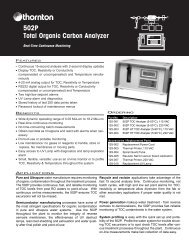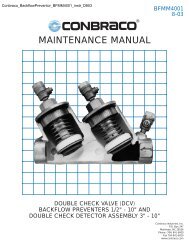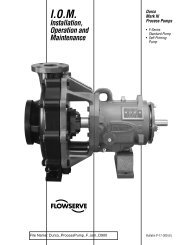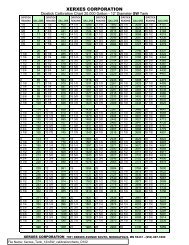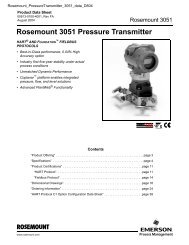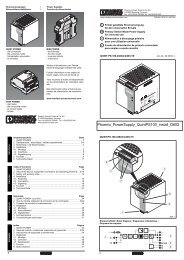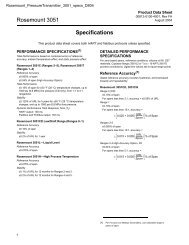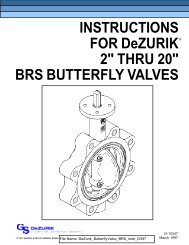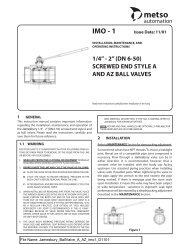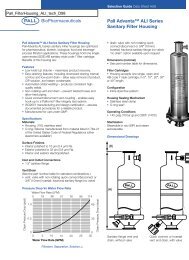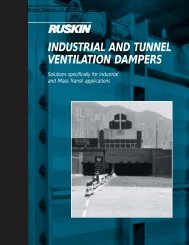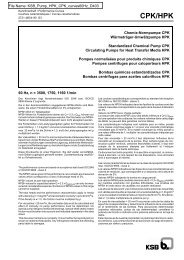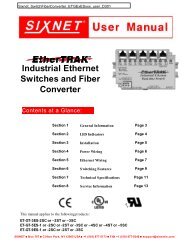Operation and Maintenance Manual for
Operation and Maintenance Manual for
Operation and Maintenance Manual for
You also want an ePaper? Increase the reach of your titles
YUMPU automatically turns print PDFs into web optimized ePapers that Google loves.
SYSTEM MAINTENANCE LC <strong>Manual</strong> 11/02 Rev. 3<br />
It is important that the sanitization chemical contact all the piping<br />
within the RO system<br />
c. The outlet of the booster pump is connected to the feed of the RO<br />
system. This connection should be made prior to the prefilter<br />
housing.<br />
d. The booster pump is turned on <strong>and</strong> the RO is run in the normal<br />
operating mode <strong>for</strong> 30 to 60 minutes.<br />
CAUTION Monitor the solution temperature during recirculation. Do not<br />
allow the temperature to exceed 25° C (77° F).<br />
e. The booster pump <strong>and</strong> the RO system are shut down <strong>and</strong> the<br />
sanitant is allowed to sit in the system (optional).<br />
f. The RO is switched back to the normal feed source <strong>and</strong> run in the<br />
normal operating mode with the product diverted to drain until all<br />
residual sanitization chemicals are flushed from the system.<br />
g. The tank <strong>and</strong> booster pump are drained <strong>and</strong> flushed with clean<br />
water.<br />
h. A new prefilter is installed in the system prefilter housing.<br />
2. Continuous Injection Method<br />
In this method of sanitization, an accessory chemical feed system injects<br />
concentrated sanitant into the feed line while the RO is operating at<br />
normal flow <strong>and</strong> pressure. Both the product <strong>and</strong> reject streams are sent<br />
directly to drain.<br />
The continuous injection method is most typically used to sanitize with<br />
hydrogen peroxide. It may be used with peracetic acid if an appropriately<br />
sized chemical feed system is available <strong>for</strong> the typical 1:100 dilution ratio.<br />
It is not practical <strong>for</strong> <strong>for</strong>maldehyde sanitization because the dilution ratio<br />
used <strong>for</strong> <strong>for</strong>maldehyde (1:10 to 1:20) would require the use of a large<br />
chemical feed pump. The advantages of the continuous injection method<br />
are minimal chemical h<strong>and</strong>ling <strong>and</strong> minimal dead legs in the system<br />
piping. One disadvantage is the relatively high chemical consumption.<br />
The basic steps <strong>for</strong> continuous injection sanitization are as follows:<br />
a. An accessory chemical feed system is connected to the feed<br />
piping of the system, typically at the system inlet sample valve.<br />
b. Reject <strong>and</strong> product lines from the RO are diverted to drain. Do not<br />
use the cleaning ports on the RO system to make these<br />
connections. It is important that the sanitization chemical contact<br />
all the piping within the RO system.<br />
c. The system is operated at normal flow <strong>and</strong> pressure.<br />
4-4 USFilter



